If I had to rank the places I run from most favorite to least favorite, I would probably put the treadmill toward the end of the list. Trails, the road, and an outdoor (rubberized) track rank first. The only locations that rank lower than the treadmill are an indoor track (especially those less than 200m), an asphalt track, and inside my apartment (sans treadmill).
Yet, treadmill running is an integral part of my training, and I dedicate about a third of my weekly mileage to it. Some weeks, it’s up to half of my mileage or more. Beyond the dictates of my profession as a treadmill reviewer and external factors, like the weather, I also run on a treadmill for key workouts.
I’m a running coach, and I’ve been running for over 15 years. These are some of the key workouts that are better on the treadmill than off the treadmill, and why I’m happy to have easy access to a treadmill on any day of the week.
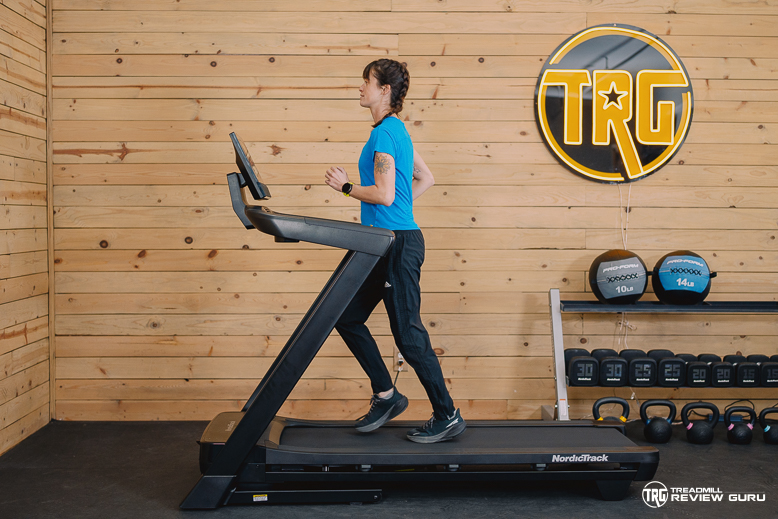
Some workouts are better on a treadmill than on the sidewalk, trails, or local track.
1. Long Hill Repeats
Why: You can control the grade and length of the hill.
Hill repeats are a key ingredient in the successful training of athletes in disciplines ranging from middle-distance track events to ultra-marathon running. They are excellent for improving “running economy,” which can be thought of as your metabolic efficiency at a certain pace.
While you can definitely run hill repeats outside, there are a few obstacles that could get in the way of your ideal workout.
For one, hill repeats outside usually require you to go back to the bottom of the hill after every uphill bout. Because downhill running is known to cause more muscle damage than uphill or flat running, it could leave your legs feeling unnecessarily sore. Running hill repeats on a treadmill is a good way to skip the eccentric action of downhill running.
As someone who has lived in an area with very few steep hills, I understand how hard it can be to find a hill that has all the characteristics you need for your workout. You may not have a hill long enough or steep enough nearby. Most home treadmills have an incline up to 12% grade, and the hill can be as long as you would like.
Treadmills are also a good way to train hills without the added difficulty of a technical trail. Rough terrain can change your biomechanics, forcing you to alter your vertical oscillation, step width, and more. With a treadmill, you can tackle a steep grade without having to take to the mountains.
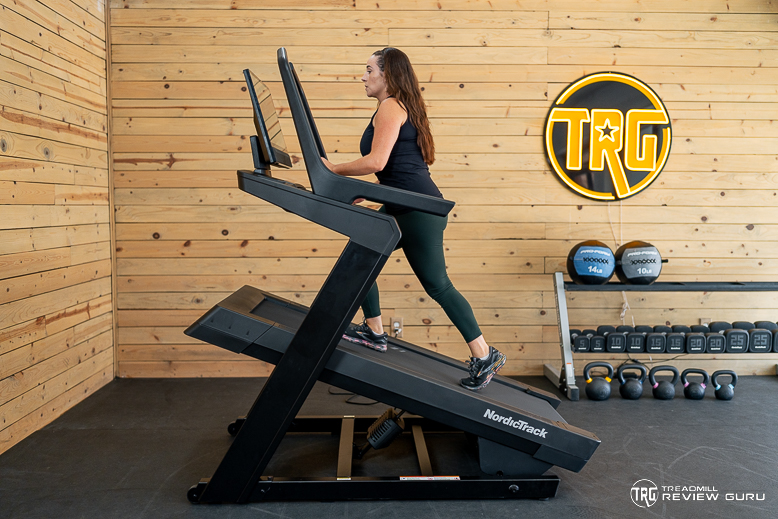
It may be hard to find a hill as steep and long as your workout demands.
Hill Workout
Warm-up: 5 to 10 minutes at a flat grade, slowly building up speed until you are running at the pace you want to target during your workout.
8 to 12 x 1 minute at 12% incline.
- Beginner modification: Start at 1% incline and increase by 1% every repetition until you reach the maximum incline you can sustain.
- Expert modification: Exceed the 12% incline range if your treadmill allows after the first two reps, adding 1% more as tolerated.
Treadmill Considerations
Depending on your hill interval requirements, you may need a treadmill with an above-average incline range.
2. Goal Pace Workouts
Why: You can introduce a new running pace while controlling all other variables.
If you are running by pace, you should be running based on a recent race time. The only exception to this rule is a few key workouts where you train at race pace. Training at race pace can help your body familiarize itself with the feel of running at that pace.
While you can certainly run goal pace workouts outside, factors such as weather, wind, hills, and pacing ability can interfere with your workout execution. A treadmill minimizes external factors and regulates your speed for you.
Running on a cushioned, motorized treadmill can make running easier, allowing you to ease your way into tougher workouts. There’s no air resistance! I like using the treadmill to test out new speeds before taking them outdoors.
During my training for the ‘25 Boston Marathon, I didn’t have time trials or shorter races scheduled to check how my fitness was progressing. As a result, I made a huge jump in fitness and only noticed due to changes in my heart rate. I used the treadmill to test out my new estimated training paces and had a lot of success. Assured that I could easily manage these new paces indoors, I slowly transitioned to running them outside, too.
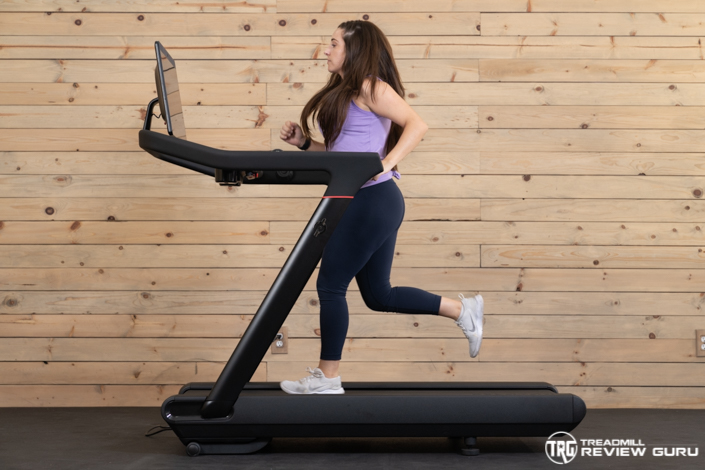
Some workouts are better to start on the treadmill and progress to running them outside.
Goal Pace Workout
Warm-Up: 10 minutes of jogging, strides, and form drills. Ensure you are sufficiently prepared for the hard effort ahead.
800m repeats at goal pace with 2 minutes rest.
*Note: Back down to current race pace if your running feels out of control.
- 5k: 4 repeats
- 10k: 6 repeats
- Half Marathon to Marathon: 8 to 10 repeats
Treadmill Considerations
If you are a faster runner, you may need a faster treadmill. Most treadmills operate at a maximum speed of 12 miles per hour. While manual treadmills can be a good option for running faster, they are more difficult, making pace-specific workouts difficult, if not unreasonable, to execute.
3. Retraining Your Gait
Why: You can limit variables, get video feedback, and control the pace on a treadmill, allowing you to concentrate on improving your running form.
Whether you have started a gait retraining program or just need to check in with yourself to reassess how you are doing, a running session focused on improving and maintaining your running form could be a good idea. Using a treadmill allows you to concentrate on your form with fewer distractions and obstacles.
After years upon years of running, I’m finally improving my forward lean. I tend to lean back or position myself too upright when I run. Now, I’m using some running form cues and retraining techniques to increase my forward lean. The only problem: I speed up every time I try to change my form while running outside.
Running on a treadmill allows me to focus on altering just the one aspect of my form I want to train, while keeping my speed constant. Sometimes, I also set up a camera to take slow-motion video of my running form, or I’ll try running with a resistance band at my waist to give me something to lean into, reinforcing my new forward lean.
I can’t do these gait retraining exercises as effectively outside. I also appreciate the decreased load of running on a treadmill due to better cushioning, reduced air resistance, and a controlled climate, as I undertake training that is altering the usual forces of running that I’ve grown accustomed to.
While I recommend working with a running specialist to discover what you might need to improve about your running form, I also recommend using a treadmill once you have a plan established.
Another benefit to improving your form on a treadmill is the ability to end your workout at any time. If you are outside, you might have a long walk back to your home or car if you discover you need to end your workout early.
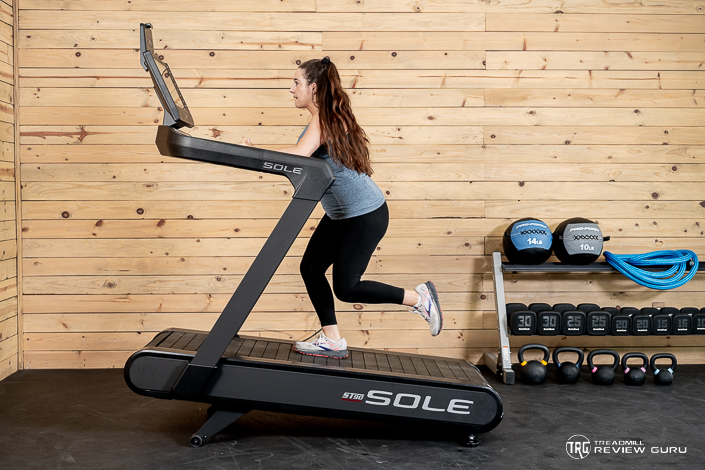
Treadmills provide a controlled environment for retraining your running form.
Gait Retraining Workout
Warm-Up: 5 to 10 minutes of muscle activation and form drills, concentrating on your form deficiencies.
15 minutes of running with a concentrated effort on improving your running form. Meditate on a specific running cue or try a few different ones until you obtain the desired result. After fifteen minutes, end your run. You can also end your workout early if you feel unable to sustain the new running form for the suggested duration.
Treadmill Considerations
Treadmills can alter your running form compared to how you run outside. Once you perfect your running form on the treadmill, you may find that you slightly regress once you move outside. Don’t worry. Establishing good form on the treadmill will allow you to make faster progress outside. You might just have to move back a step or two in your retraining plan, at first.
4. Lactate Threshold Training (Tempo Runs)
Why: You can measure lactate threshold, control variables, and more easily replicate a lab setting.
Improving your lactate threshold and velocity at your lactate threshold are key to performance at race distances from the 1500m to the marathon. Oftentimes, runners use heart rate zone training and tempo runs to approximate training at their lactate threshold. While this type of training is effective, it could be more effective.
Using heart rate and paces based on a past race time are surrogates for training at your lactate threshold. To know if you were training at your lactate threshold, you would need to take a measurement of your blood lactate level.
Training outside introduces variables like hills, heat, and wind that could throw off your plans to train at your lactate threshold. Suddenly, training at that pace may not be nearly as good a surrogate for blood lactate levels as you think it is.
Running lactate threshold workouts on a treadmill allows you to more easily test your blood lactate with a blood lactate meter if you desire. However, it can also just make the estimate you are using (RPE, heart rate, or pace) more accurate by removing other factors.
For example, let’s say you get your lactate threshold measured in a performance test. You know your heart rate and the pace at which you hit your lactate threshold on a treadmill. If you recreate that same pace on your treadmill at home, you can be fairly confident you are getting the most benefit out of your workout.
Once you have a better feel for what running at your lactate threshold feels like on the treadmill, you may be able to train outdoors with more reliability. It’s important when training at your lactate threshold not to overdo it, even when you feel good.
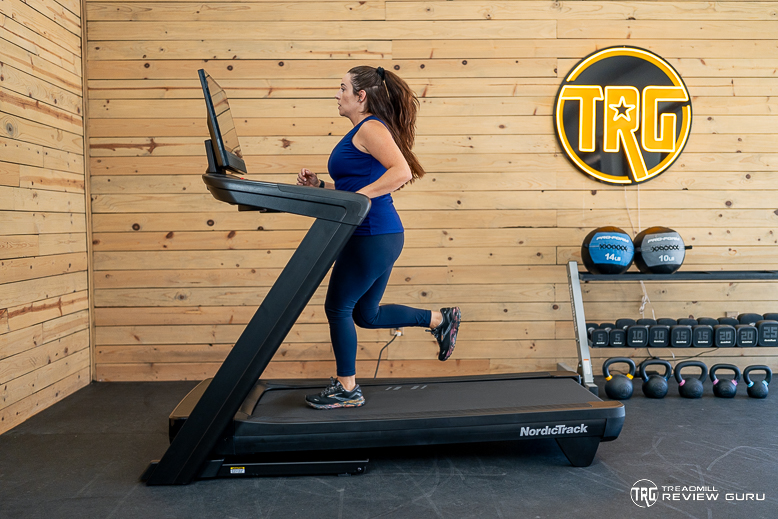
Make sure you stay on your pace target with a motorized treadmill.
Tempo Workout
Warm-up: 10 minutes, including form drills and progressing from a slow to tempo speed.
4 to 6 x .75-mile repeats at lactate threshold with 90 seconds rest
*Note: If you don’t know your lactate threshold, use an RPE of 7-8, heart rate of 82% to 92% of max, or use an online calculator to estimate your threshold pace based on a recent race time.
- Beginner modification: Reduce to .25-mile repeats if this is your first time doing a tempo workout. Reduce to .5-mile repeats if you run less than 20 miles per week.
- Advanced modification: Increase to 1-mile repeats with 1-minute rest.
Treadmill Considerations
For tempo intervals, I prefer a treadmill with a fast speed acceleration. You may also need a treadmill with a higher speed. I also recommend calibrating and assessing the treadmill’s speed accuracy, if possible. In our experience, most are pretty accurate. All of the treadmills featured below have faster-than-average speed accelerations.
5. “Recovery Runs”
Why: You can reduce the load on your body, control variables, and stop the workout as needed.
There’s much debate over whether or not a so-called “recovery run” exists. The opposition claims that all running incurs damage on the body, no matter how light the load. Those for recovery runs point out that short, easy runs can loosen up stiff muscles and improve blood flow.
My favorite sub-category of the recovery run is the shakeout run. It’s the run you do when you’ve been traveling for hours and have no other training goal other than to loosen yourself up from the hunched position you’ve been stuck in for hours. It’s also a key run before a race when you want to prime the muscles for your upcoming event.
Some call recovery runs junk miles, meaning you are only doing them to boost your weekly mileage. Junk miles are demonized because you might be better off not doing them.
Enter the treadmill. Instead of increasing the load of your recovery run by pounding the pavement and facing the elements, use a treadmill. The added cushioning, lack of wind resistance, and climate control make runs feel easier. You can also keep the treadmill at a completely flat grade. I give you permission to ignore the rule of setting your treadmill to 1%.
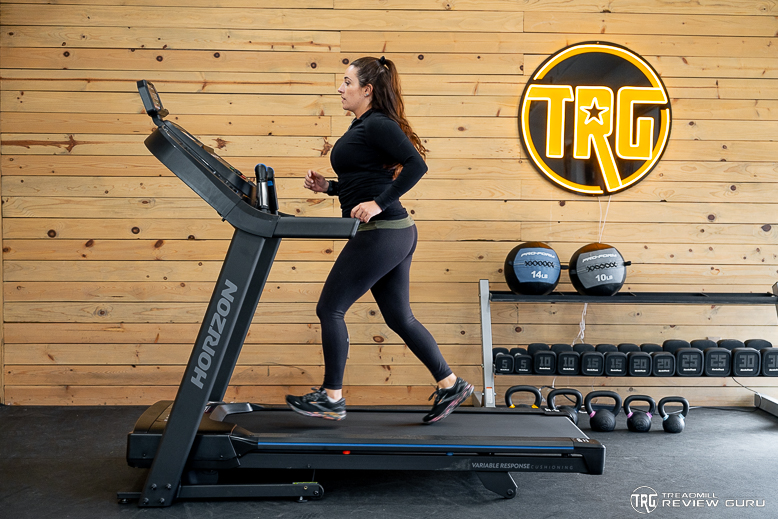
Keep things light with a cushioned treadmill deck.
Recovery Run Workout
Run for 10 to 30 minutes at an RPE of 3 or less.
*Note: If you believe in the recovery run, or at least, the “easy run,” keep things as light and easy as possible.
Treadmill Considerations
I recommend a cushioned treadmill for your recovery run.

 АРХИВ
АРХИВ БОКС И ЕДИНОБОРСТВА
БОКС И ЕДИНОБОРСТВА Игровые виды спорта
Игровые виды спорта КАРДИОТРЕНАЖЕРЫ
КАРДИОТРЕНАЖЕРЫ МАССАЖНОЕ ОБОРУДОВАНИЕ
МАССАЖНОЕ ОБОРУДОВАНИЕ МЕДИЦИНА РЕАБИЛИТАЦИЯ
МЕДИЦИНА РЕАБИЛИТАЦИЯ СВОБОДНЫЕ ВЕСА
СВОБОДНЫЕ ВЕСА СИЛОВЫЕ ТРЕНАЖЕРЫ
СИЛОВЫЕ ТРЕНАЖЕРЫ Соревновательное оборудование
Соревновательное оборудование СПОРТ ДЛЯ ДЕТЕЙ
СПОРТ ДЛЯ ДЕТЕЙ СПОРТИВНОЕ ПИТАНИЕ И АКСЕССУАРЫ
СПОРТИВНОЕ ПИТАНИЕ И АКСЕССУАРЫ УЛИЧНЫЕ ТРЕНАЖЕРЫ
УЛИЧНЫЕ ТРЕНАЖЕРЫ ФИТНЕС И АЭРОБИКА
ФИТНЕС И АЭРОБИКА